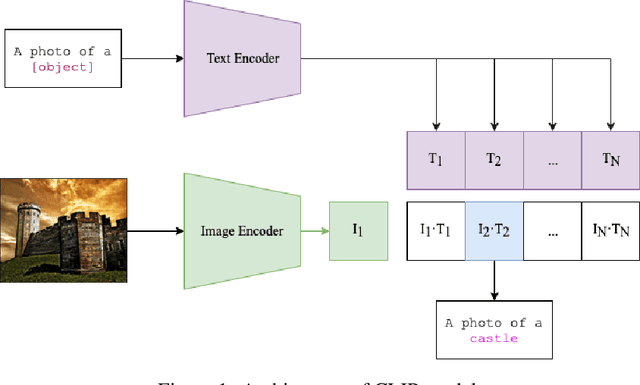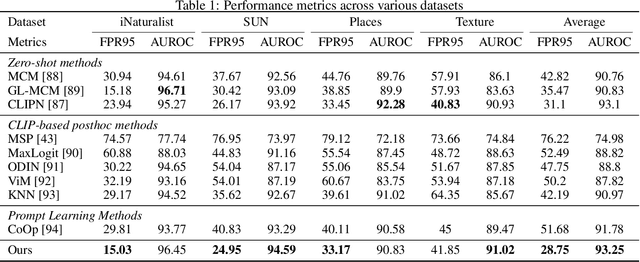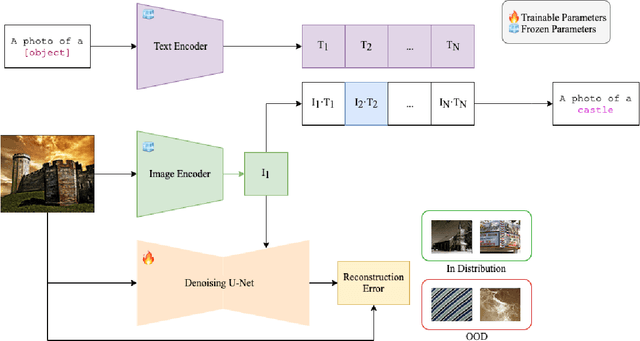Armando Zhu
Exploiting Diffusion Prior for Out-of-Distribution Detection
Jun 16, 2024


Abstract:Out-of-distribution (OOD) detection is crucial for deploying robust machine learning models, especially in areas where security is critical. However, traditional OOD detection methods often fail to capture complex data distributions from large scale date. In this paper, we present a novel approach for OOD detection that leverages the generative ability of diffusion models and the powerful feature extraction capabilities of CLIP. By using these features as conditional inputs to a diffusion model, we can reconstruct the images after encoding them with CLIP. The difference between the original and reconstructed images is used as a signal for OOD identification. The practicality and scalability of our method is increased by the fact that it does not require class-specific labeled ID data, as is the case with many other methods. Extensive experiments on several benchmark datasets demonstrates the robustness and effectiveness of our method, which have significantly improved the detection accuracy.
Enhanced Detection Classification via Clustering SVM for Various Robot Collaboration Task
May 05, 2024Abstract:We introduce an advanced, swift pattern recognition strategy for various multiple robotics during curve negotiation. This method, leveraging a sophisticated k-means clustering-enhanced Support Vector Machine algorithm, distinctly categorizes robotics into flying or mobile robots. Initially, the paradigm considers robot locations and features as quintessential parameters indicative of divergent robot patterns. Subsequently, employing the k-means clustering technique facilitates the efficient segregation and consolidation of robotic data, significantly optimizing the support vector delineation process and expediting the recognition phase. Following this preparatory phase, the SVM methodology is adeptly applied to construct a discriminative hyperplane, enabling precise classification and prognostication of the robot category. To substantiate the efficacy and superiority of the k-means framework over traditional SVM approaches, a rigorous cross-validation experiment was orchestrated, evidencing the former's enhanced performance in robot group classification.
Cross-Task Multi-Branch Vision Transformer for Facial Expression and Mask Wearing Classification
Apr 30, 2024Abstract:With wearing masks becoming a new cultural norm, facial expression recognition (FER) while taking masks into account has become a significant challenge. In this paper, we propose a unified multi-branch vision transformer for facial expression recognition and mask wearing classification tasks. Our approach extracts shared features for both tasks using a dual-branch architecture that obtains multi-scale feature representations. Furthermore, we propose a cross-task fusion phase that processes tokens for each task with separate branches, while exchanging information using a cross attention module. Our proposed framework reduces the overall complexity compared with using separate networks for both tasks by the simple yet effective cross-task fusion phase. Extensive experiments demonstrate that our proposed model performs better than or on par with different state-of-the-art methods on both facial expression recognition and facial mask wearing classification task.
Utilizing Deep Learning to Optimize Software Development Processes
Apr 21, 2024Abstract:This study explores the application of deep learning technologies in software development processes, particularly in automating code reviews, error prediction, and test generation to enhance code quality and development efficiency. Through a series of empirical studies, experimental groups using deep learning tools and control groups using traditional methods were compared in terms of code error rates and project completion times. The results demonstrated significant improvements in the experimental group, validating the effectiveness of deep learning technologies. The research also discusses potential optimization points, methodologies, and technical challenges of deep learning in software development, as well as how to integrate these technologies into existing software development workflows.
 Add to Chrome
Add to Chrome Add to Firefox
Add to Firefox Add to Edge
Add to Edge